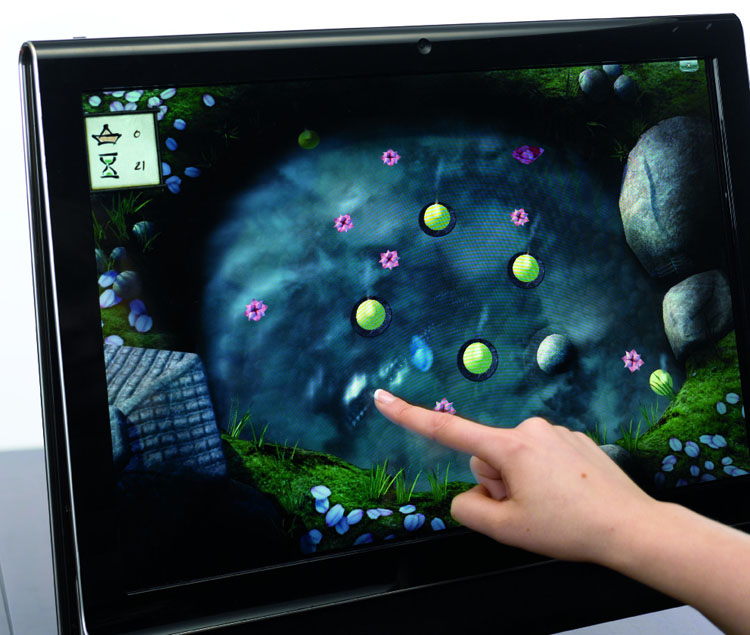

I also measured, weighed and examined each unit, and followed that with an intense workout with the PassMark PerformanceTest 7.0 benchmark. Forgoing the keyboard and touchpad, I visited a number of Web sites, moved windows around, manipulated images, played games and - despite being artistically challenged - doodled. To see how these systems measure up, I tried out each display with my finger, pen or both. In this review, I look at three: Fujitsu's LifeBook T4410, HP's TouchSmart tx2z and Lenovo's ThinkPad T400s. In the meantime, the first round of Win 7 touch machines has arrived. As touch-screen sales volumes rise, however, prices will drop, predicts DisplaySearch's Colgrove. Especially for systems with displays larger than those meant for a handheld, touch can add a couple of hundred dollars to the cost of the computer. It's already used on HP's TouchSmart line of desktop PCs and touch-enabled large-screen monitors - the next step is to make these sensors small, light and rugged enough for notebooks.) Like a burglar alarm, it's activated when the beam is broken. (For those who like to look into the future, there's a new digitizer technology coming that could replace expensive capacitive electronics with an infrared or optical sensor at each corner of the screen. Though character recognition is still not perfect, it has improved enough that most users can successfully enter Web addresses and write lists and words or short phrases.

Need to rotate it? Pivot your forefinger around your thumb.Ĭapacitive digitizers also make for more accurate handwriting recognition. Want to enlarge an image? Pull your thumb and forefinger apart. They respond to the lightest of touches and can handle several inputs at once, which means you can use complex gestures, like those supported by Apple's iPhone. In the past, the initial resistive digitizers, which worked by using pressure to make two sheets of material touch, weren't reliable enough, required too much pressure and could only handle a single input at a time.īy contrast, today's capacitive digitizers work when the user disturbs an electromagnetic field on the screen's surface with a finger or specialized stylus pen. On the hardware side, the secret to adding touch is the digitizer, a translucent grid array that sits on top of a notebook's LCD display. More to the point, she sees them going from exclusively business systems to those that consumers buy as well. Spurred on by the release of Windows 7 and new hardware, Colgrove forecasts that the number of touch notebooks sold could rise from today's 2 to 3 percent of the market to as much as 10 percent in 2015.


 0 kommentar(er)
0 kommentar(er)
